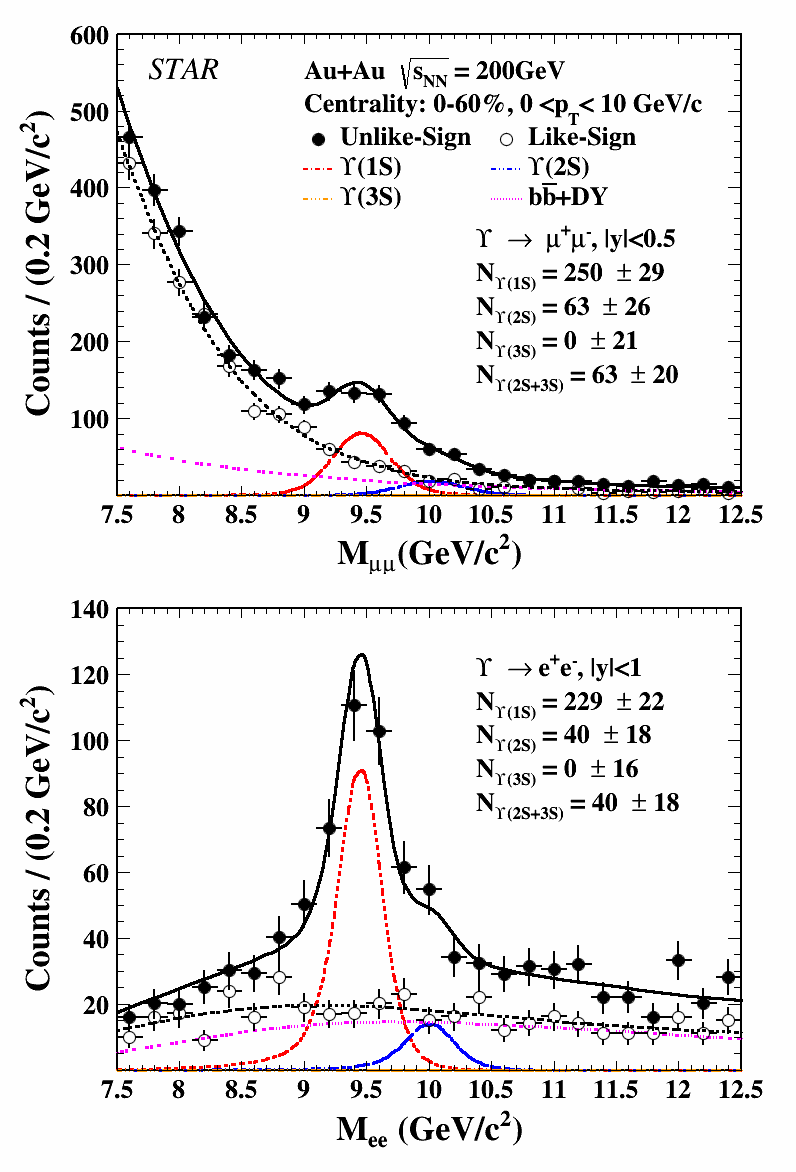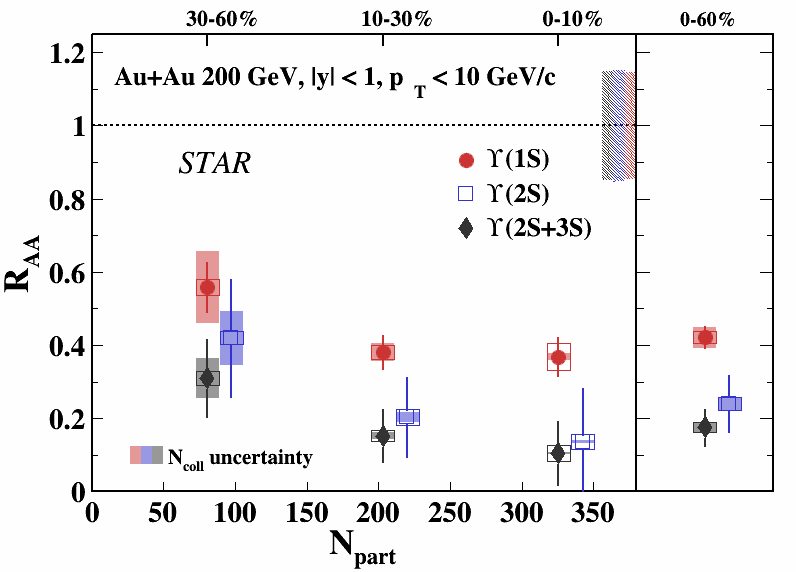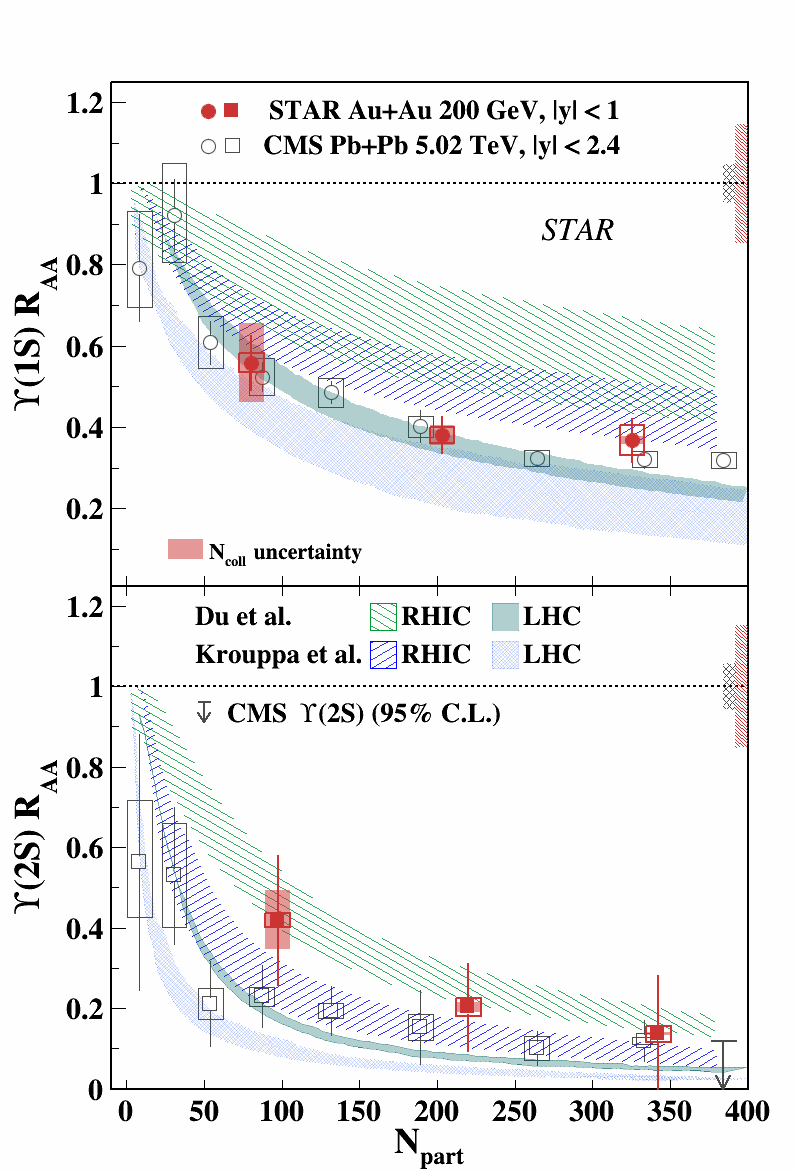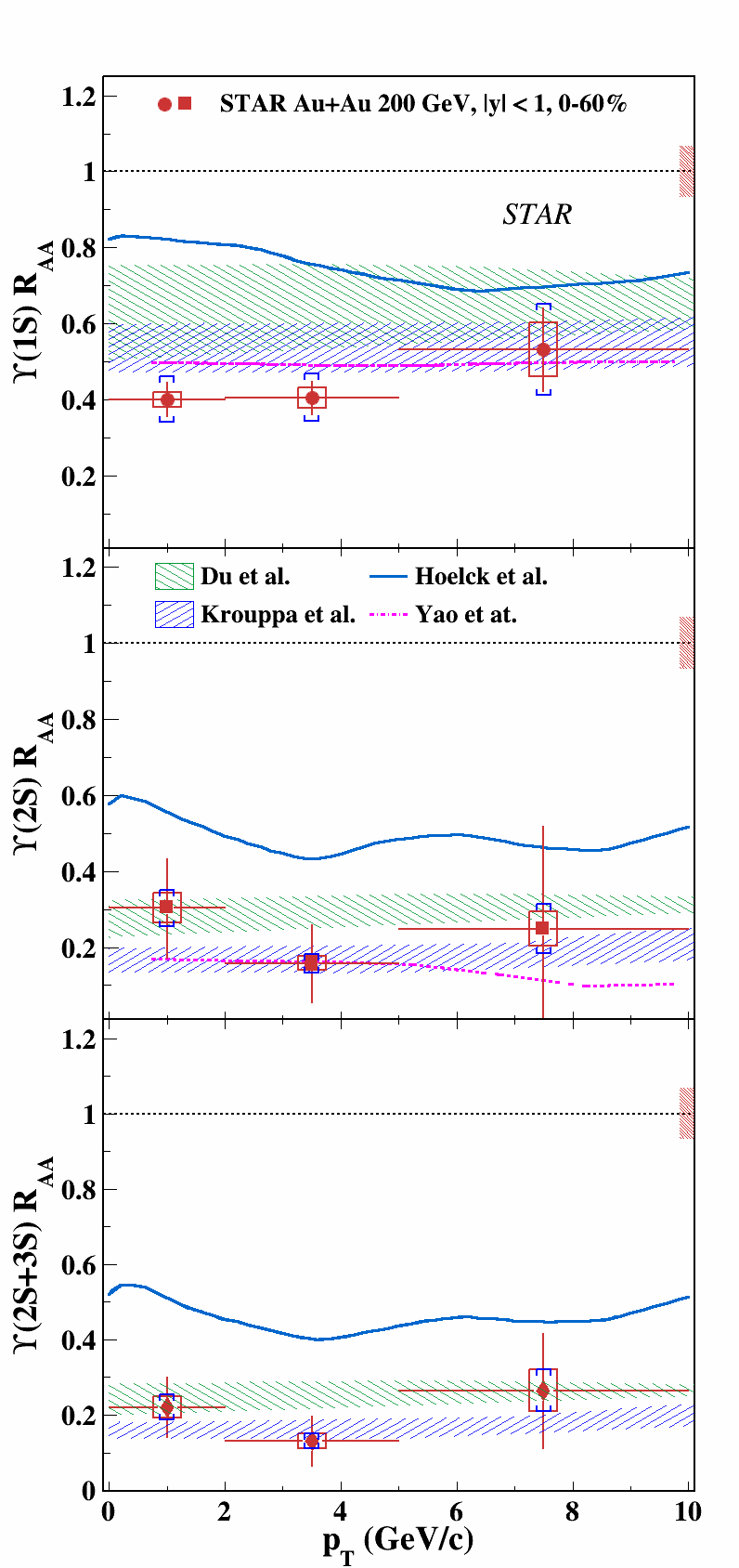Upsilon paper
Observation of sequential Upsilon suppression in Au+Au collisions at √sNN = 200 GeV with STAR experiment
PAs: Bingchu Huang, Te-chuan Huang, Xinjie Huang, Rongrong Ma, Lijuan Ruan, Zebo Tang, Pengfei Wang, Yi Wang, Zhangbu Xu, Chi Yang, Qian Yang, Shuai Yang, Yi Yang, Zaochen Ye, Zhenyu Ye, Wangmei Zha, Zhe-jia Zhang, Xianglei Zhu
Target Journal: Phys. Rev. Lett.
Paper draft:
Analysis Note:
dielctron:
v1.0
dimuon:
HFv1.0
Supportting material:
Abstract:
We report on measurements of Υ suppression in Au+Au collisions at √sNN = 200 GeV via both di-electron and di-muon decay channels with the STAR detector at the Relativistic Heavy Ion Collider. The nuclear modification factors (RAA) for the ground and excited Υ states are presented as functions of transverse momentum (pT) and centrality. In the 0-60% central collisions, Υ(1S) and Υ(2S+3S) are sequentially suppressed, whose RAA are 0.42 ± 0.03(stat.) ± 0.02(sys.) ± 0.06(norm.) and 0.17 ± 0.05(stat.) ± 0.01(sys.) ± 0.02(norm), respectively. No significant pT dependence is observed. The levels of suppression for ground and excited Υ states are comparable to those observed at the LHC energy.
Figures:
|
|
| Figure 1. Invariant mass distributions of Υ candidates for 0 < pT < 10 GeV/c reconstruc ted via the di-muon channel (top) for | y | < 0.5 and di-electron (bottom) channel for | y | < 1. Unlike-sign (full circles) and like-sign (open circles) distributions are simultaneously fitted with the unbinned ma ximum likelihood method. The like-sign distribution is used to estimate combinatorial background. The shapes of residual background from bb and Drell-Yan process are determined by simulation. |
|
|
| Figure 2. Υ(1S) (circles), Υ(2S) (squares) and Υ(2S+3S) (dimonds) RAA as a function of Npart for pT < 10 GeV/c. The vertical bars on data points indicate statistical errors, while the systematic uncertainties are indicated as boxes. Shadowed bands around each marker depict the systematic uncertainties from Ncoll. The bands at unity on the right side shows the global uncertainties from the p+p reference for Υ(1S), Υ(2S) and Υ(2S+3S),respectively. |
|
|
| Figure 3. Υ(1S) (top) and Υ(2S) (bottom) RAA as a function of Npart for pT < 10 GeV/c, compared to measurements (open symbols) in Pb+Pb collisions at √sNN = 5.02 TeV, as well as different model calculations. The two bands at unity indicate the global uncertainties with the left one for CMS and the right one for STAR. |
|
|
| Figure 4. Υ(1S) (top),Υ(2S) and Υ(2S+3S) (bottom) RAA as a function of pT in the 0-60% centrality, compared to different model calculations. The boxes and brackets around the data points represent systematic uncertainties from Au+Au analysis and p+p reference, respectively. The band at unity shows the uncertainty in Ncoll. |
Summary:
In summary, we report on measurements of Υ mesons suppression in Au+Au collisions at √sNN = 200 GeV with the STAR detector at RHIC.
- For the first time, Υ(1S) and Υ(2S) suppression are measured separately at RHIC in Au+Au collisions at √sNN = 200 GeV.
- Υ(2S+3S) is more suppressed than Υ(1S) in 0-60%. In the 0-60% central collisions, Υ(2S+3S) is suppressed by a factor of 5.8 while Υ(1S) is suppressed by a factor of approximately 3.4.
- This is also the first measurement of pT dependence of Υ mesons suppression from STAR. No clear pT dependence of the suppression is observed.
- Υ(1S) and Υ(2S) have a similar magnitude of suppression as observed in Pb+Pb collisions at √sNN = 5.02 TeV.
- Different model calculations are consistent with the experiment measurements.
- pfwang's blog
- Login or register to post comments




